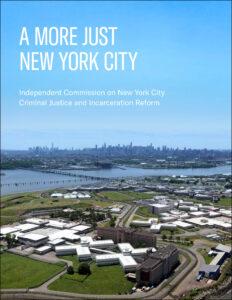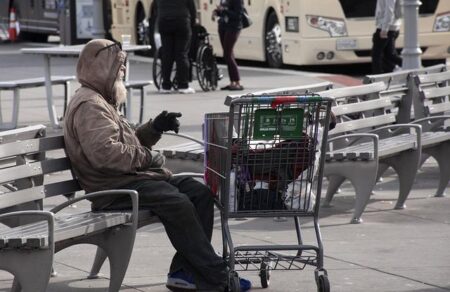Rethinking New York City’s Jail System: A Multifaceted Path to Reform
Harmonizing Public Safety with Respectful Incarceration Practices
Reforming New York City’s jail system requires a delicate balance between ensuring community safety and upholding the dignity of those detained. Persistent challenges such as overcrowding, insufficient mental health resources, and lapses in oversight continue to plague these institutions. Advocates stress that security protocols must not undermine humane treatment, urging reforms that simultaneously reduce violence and promote the wellbeing of incarcerated individuals.
A truly effective transformation involves a multi-pronged strategy, including:
- Specialized training for correctional officers focused on trauma-informed approaches and conflict de-escalation
- Expanded availability of mental health and medical care tailored to inmate needs
- Consistent, transparent disclosure of jail conditions and incident reports
- Active collaboration with community stakeholders to align safety objectives with human rights principles
| Focus Area | Goal | Anticipated Result |
|---|---|---|
| Mental Health Services | Increase availability of counseling and crisis support | Lower rates of self-injury and violent incidents |
| Staff Development | Adopt trauma-sensitive training programs | Enhanced relationships between inmates and staff |
| Accountability | Regular publication of facility conditions and incidents | Increased public confidence and oversight |
Confronting Racial Inequities and Structural Bias in NYC’s Correctional Facilities
Racial disparities remain a glaring issue within New York City’s jail population, with Black and Latino individuals incarcerated at rates disproportionate to their community representation. This imbalance reflects systemic prejudices embedded in policing, judicial decisions, and resource allocation. Meaningful reform must go beyond superficial fixes, targeting the root causes of discrimination throughout the criminal justice process.
Key reform priorities include:
- Transparent reporting of arrest and sentencing data to expose disparities
- Comprehensive bias reduction training for law enforcement officers and judges
- Investment in community programs addressing poverty, education, and social support
- Expansion of alternative sentencing options prioritizing rehabilitation for non-violent offenses
| Ethnic Group | Percentage of NYC Population | Percentage of Jail Population |
|---|---|---|
| Black | 22% | 45% |
| Latino | 29% | 38% |
| White | 32% | 12% |
Integrating Mental Health and Addiction Support to Break the Cycle of Recidivism
Untreated mental health conditions and substance use disorders are significant contributors to repeated incarcerations in NYC jails. Many individuals cycle through the system due to inadequate access to care, underscoring the need for a rehabilitative rather than punitive approach. Evidence shows that comprehensive mental health and addiction services reduce reoffense rates and promote long-term stability.
Effective interventions include:
- Cognitive Behavioral Therapy (CBT) to address trauma and maladaptive behaviors
- Medication-Assisted Treatment (MAT) for opioid and other substance dependencies
- Seamless post-release care coordination connecting individuals to community resources
- Peer-led support groups and mentorship programs to combat isolation
Without substantial investment in these areas, reforms risk failing to address the underlying causes of incarceration.
| Service Type | Effect on Recidivism | Additional Benefits |
|---|---|---|
| Addiction Treatment | 50% decrease | Enhanced job prospects |
| Mental Health Counseling | 35% decrease | Improved social integration |
| Post-Release Support | 40% decrease | Reduced housing instability |
Strategic Policy Initiatives for Lasting Jail Reform in NYC
Transformative jail reform in New York City hinges on a comprehensive framework that transcends simple decarceration. Investments must prioritize mental health care, addiction treatment, and educational opportunities both within correctional facilities and in the community. Redirecting resources toward alternatives to incarceration addresses the root causes of criminal behavior and reduces repeat offenses. Transparency and accountability in jail administration are critical to restoring public trust and preventing misconduct.
Recommended policy actions include:
- Scaling diversion programs that emphasize therapeutic interventions over incarceration
- Upgrading living conditions in jails to support rehabilitation and respect human rights
- Establishing routine audits and community oversight boards to monitor jail operations
- Creating employment pathways for formerly incarcerated individuals to reduce recidivism
- Fostering partnerships among law enforcement, social services, and community groups for integrated support
| Policy Component | Primary Benefit | Projected Impact |
|---|---|---|
| Expansion of Pretrial Services | Decreases unnecessary jail detentions | 30% reduction in jail admissions |
| Investment in Mental Health Care | Enhances treatment success | 25% decline in repeat offenses |
| Community Reintegration Programs | Strengthens social stability | 20% increase in employment rates |
Conclusion: Embracing Complexity for Meaningful Change
The ongoing discourse surrounding jail reform in New York City reveals that simplistic fixes are insufficient. Addressing overcrowding, racial inequities, and mental health challenges requires a holistic, collaborative approach involving policymakers, law enforcement, and community members. Only by confronting these intertwined issues with thoughtful, evidence-based strategies can NYC build a correctional system that is both just and effective.













